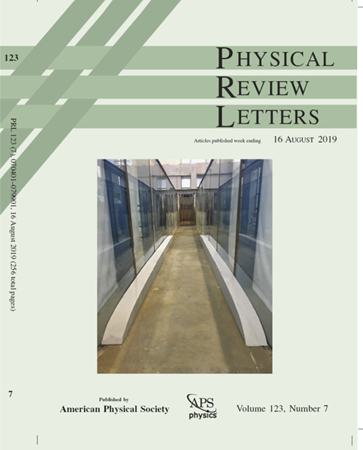Resonant Conversion of Wave Dark Matter in the Ionosphere
IF 8.1
1区 物理与天体物理
Q1 PHYSICS, MULTIDISCIPLINARY
引用次数: 0
Abstract
We consider resonant wavelike dark matter conversion into low-frequency radio waves in the Earth’s ionosphere. Resonant conversion occurs when the dark matter mass and the plasma frequency coincide, defining a range mDM∼10−9–10−8eV where this approach is best suited. Owing to the nonrelativistic nature of dark matter and the typical variational scale of the Earth’s ionosphere, the standard linearized approach to computing dark matter conversion is not suitable. We therefore solve a second-order boundary-value problem, effectively framing the ionosphere as a driven cavity filled with a positionally varying plasma. An electrically small dipole antenna targeting the generated radio waves can be orders of magnitude more sensitive to dark photon and axionlike particle dark matter in the relevant mass range. This Letter opens up a promising way of testing hitherto unexplored parameter space that could be further improved with a dedicated instrument.电离层中波动暗物质的共振转换
我们考虑共振波状暗物质在地球电离层转化为低频无线电波。当暗物质质量和等离子体频率重合时,共振转换就会发生,在mDM ~ 10−9-10−8eV范围内最适合这种方法。由于暗物质的非相对论性和地球电离层的典型变分尺度,标准的线性化方法不适合计算暗物质的转换。因此,我们解决了二阶边值问题,有效地将电离层框架为充满位置变化等离子体的驱动腔。以产生的无线电波为目标的电小型偶极子天线对相关质量范围内的暗光子和轴子样粒子暗物质的灵敏度可以提高几个数量级。这封信开辟了一种有希望的方法来测试迄今为止尚未开发的参数空间,可以通过专用仪器进一步改进。2024年由美国物理学会出版
本文章由计算机程序翻译,如有差异,请以英文原文为准。
求助全文
约1分钟内获得全文
求助全文
来源期刊

Physical review letters
物理-物理:综合
CiteScore
16.50
自引率
7.00%
发文量
2673
审稿时长
2.2 months
期刊介绍:
Physical review letters(PRL)covers the full range of applied, fundamental, and interdisciplinary physics research topics:
General physics, including statistical and quantum mechanics and quantum information
Gravitation, astrophysics, and cosmology
Elementary particles and fields
Nuclear physics
Atomic, molecular, and optical physics
Nonlinear dynamics, fluid dynamics, and classical optics
Plasma and beam physics
Condensed matter and materials physics
Polymers, soft matter, biological, climate and interdisciplinary physics, including networks
 求助内容:
求助内容: 应助结果提醒方式:
应助结果提醒方式:


